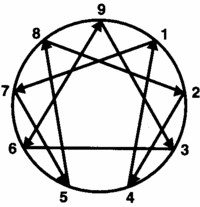 In the previous blog, I provided you with a link to a blog about a problem-solving tool that I am describing in detail on the SD Forum Engineering Leadership SIG (ELSIG) blog site: http://sdforumelsig.blogspot.com/search?q=matt+schlegel
In the previous blog, I provided you with a link to a blog about a problem-solving tool that I am describing in detail on the SD Forum Engineering Leadership SIG (ELSIG) blog site: http://sdforumelsig.blogspot.com/search?q=matt+schlegel
And, while you will find the steps of that problem-solving approach in the ELSIG blog, I include them here for your reference:
1. Problem – Goal: List the problems, define the goals
2. Team: Build a balanced team
3. Ideas: Brainstorm ideas for solutions
4. Analysis: Analyze the ideas
5. Proposal: Prepare a promising plan
6. Advocate: Present the promising proposal
7. Implementation: Implement the plan
8. Debrief: What worked? What didn’t? Start again.
Also, in the previous blog, I promised to explain how I found this problem-solving process. As the title of this blog indicates, I derived this from the Enneagram. For those of you not familiar with the Enneagram, here is a good place to learn more: http://www.enneagraminstitute.com/
I have been studying the Enneagram for about 8 years now. I have found the Enneagram to be a powerful tool. Each number on the Enneagram defines a mode or style of human behavior. The Enneagram says that there are 9 core modalities. It goes on to say that while people can operate in different modes, we each have a core mode that governs much of our behavior. Myself, being the skeptical scientific type, I had to test this supposition. And, test it though I may, I have not found an instance yet where the model does not work well. The Enneagram has enabled me to have a better understanding of myself, my family, my friends and my colleagues, for which I am very grateful.
The Enneagram labels each mode with a number from 1 to 9. The number itself is not very descriptive and will not detract from the rich description that each mode deserves. A label, such as “Perfectionist” or “Skeptic,” does start to pigeon hole, so many Enneagram explanations try to avoid doing this. I had wondered why the numbers are in the particular order that they are. During the course of my studies, I came across a brief comment that said, in essence, the sequential order is the order in which humans naturally solve problems. After learning this, I started to observe that many of the problem-solving methods that we commonly use, the scientific method for instance, do follow this same pattern. Fascinating!
You will have already noted that the problem-solving process that I have outlined has 8 steps and not 9. This is a modification that I made in order to make this approach suitable for consumption in the corporate environment. After step 3, the Idea Brainstorming step, it is natural to analyze each idea. The Enneagram says that there are two sides of analysis, the emotional analysis (4) and the logical analysis (5). Not wanting to venture into the realm of asking a group of director-level leaders, “How does that idea make you feel?” I opted to combine both sides of analysis into one step that I simply call “Analysis.” That being said, no matter what you call it, the feelings do come out and must be acknowledged – it is a natural part of the process.
Okay, so now you know how I derived this problem-solving process, and you have been introduced to how you can tie each step in this process back to a core human-behavior modality as described by the Enneagram. This understanding gives us the foundation to think about sharing leadership during the problem-solving process. The implication is that people who operate in a given mode will be naturally talented at the activity associated with that part of the problem-solving process. The problem-solving facilitator can leverage these talents to quickly and effectively navigate through each phase of the process, in effect sharing leadership at each step. I will explore this shared leadership in more detail in the next blog.
I have found one book that describes problem solving using the Enneagram, The Enneagram Personality Portraits: Improving Problem-Solving Skills, by Patrick J. Aspell and Dee Dee Aspell. If anyone has come across other references to problem solving using the Enneagram, I would appreciate hearing about them.
